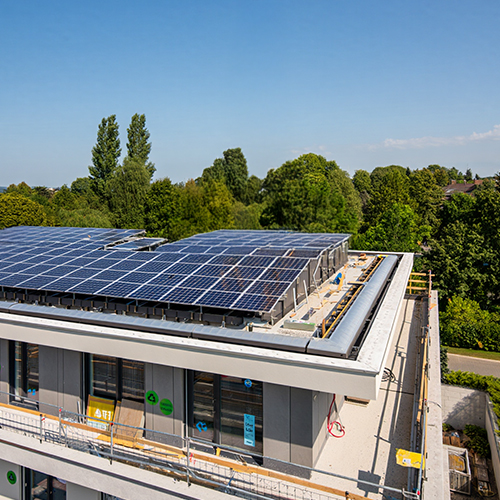Home » The Role of Cement Particle Boards in Sustainable Construction!
In the ever-changing, fast-paced world of the current day, with the world rapidly altering at an unprecedented pace never witnessed before, the construction sector is revolving around it, built around sustainable construction materials. More environmentally sensitive living and legislatively necessary compliance have been incurring sharp calls for less eco-straining building options. It has presented the rising adoption trend of eco-friendly building materials, looking to lessen their footprint without sacrificing strength, endurance, and adaptability.
Cement particleboard is a rigid and versatile construction material consisting of a proprietary formulation of cement, wood particles (or chips), and additives. The boards use the strength of cement and the pliability of wood-based products, and are practical and ecologically sound.
In contrast to gypsum boards or plywood, cement particle boards are designed to perform better in adverse conditions. They are fireproof, termite-resistant, and water-resistant and can be used both indoors and outdoors. Their non-toxicity and lower emissions during manufacturing make them an ideal option for builders seeking to shift towards sustainable construction materials.

Industry-leading manufacturers such as NCL India have employed this technology to make cement particle boards according to international specifications and adapt them to India’s diverse climatic and construction environment.
Cement particle boards are not merely a building trend—they’re a cornerstone of the green revolution in construction. Their environmental advantage is due to both their make and lifecycle.
To begin with, the boards utilise farm residues or wood waste, a new use for what would have otherwise been considered waste. Second, their production requires less input of energy compared to most eco-friendly building materials and therefore has a lower total carbon footprint.
More significantly, they are part of the expanding family of green building materials. Their durability means that they will not need to be replaced as often, and when they do come to the end of their life cycle. These characteristics make them appealing to environmentally friendly builders and architects who want to reduce the environmental footprint of buildings.
From residential flat apartments to commercial buildings, cement particle boards support green building practices and are suitable for certifications such as LEED, IGBC, and GRIHA.
The versatility of cement particle boards results in several architectural and structural possibilities. Cement particle boards are used for various applications, such as:
Their integrity is appropriate for both load-bearing and non-load-bearing members. Coupled with contemporary building systems such as modular or precast systems, these boards find it relatively easy to integrate with other materials such as steel or concrete.
And here, the ready-mix concrete benefits kick in. With ready-mix concrete and cement particle boards, there is quicker execution and reduced wastage of material, particularly in prefabricated buildings, site offices, and temporary homes.
Dependability and quality cannot be compromised, like any other construction material. Cement particle boards are tested before they are eligible for use in constructing sensitive structures.
They involve tests on the following parameters:
Sustainable construction materials offer a quality assurance level to a project. Quality companies like NCL have rigorous quality processes with internal labs and third-party testing so that the product resists both structural and environmental forces.
This adherence to quality protects buildings and increases confidence among architects and engineers in using newer materials.
Most homeowners and builders are used to the use of plywood, MDF, or gypsum boards. Though such products have stood the test of time in terms of decades of service to the industry, they are limited.
Plywood, for instance, can be infested by termites and warp when subjected to wet conditions. Gypsum boards can weaken with time under the influence of moisture. MDF is weak in structure and unsuitable for outdoor use.
Cement particle boards are superior to the other three in some of the most critical aspects:
This toughness, along with green building materials that neither sacrifice performance nor aesthetics.
The future is greener cities and brighter homes, and materials such as cement particle boards are leading the way. Government incentives, sustainability rating systems, and rising consumer awareness are driving the demand for green buildings.
India is transforming as Tier 1 and 2 cities adopt newer construction technologies. Health care, education, and hospitality are also increasingly demanding green solutions.
Forward-looking companies such as NCL are pioneering in product quality, green manufacturing, and supply chain management. As changing industry regulations drive the products, such as cement particle boards, to become pivotal in setting up the next phase of sustainable infrastructure.
Construction sustainability is no longer an option. Cement particleboard is a fast, efficient, and environmentally sound solution that integrates well with today’s green building standards agenda. Their unparalleled versatility, strength, and environmental benignity make them part of today’s builder kit.
When combined with other new materials such as concrete, particularly in prefab and modular structures, the ready-mix concrete benefits were doubled, providing quicker project duration and reduced wastage.

©2024 NCL Industries All Rights Reserved. Privacy Policy